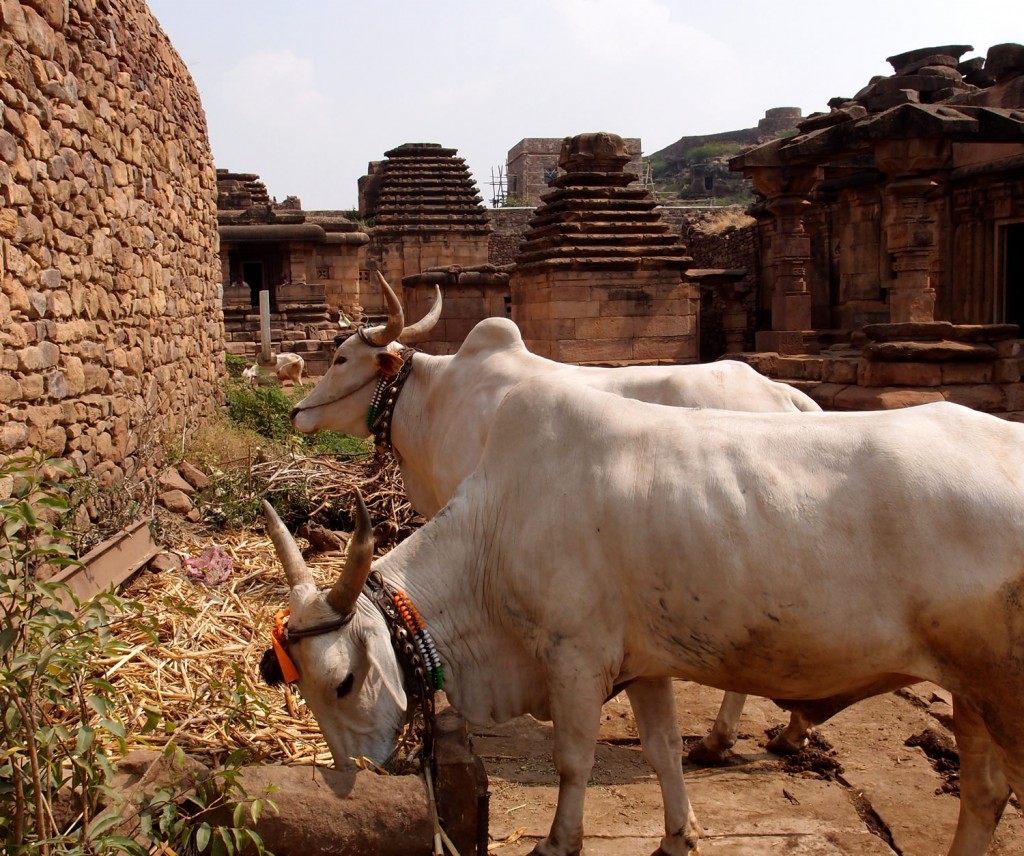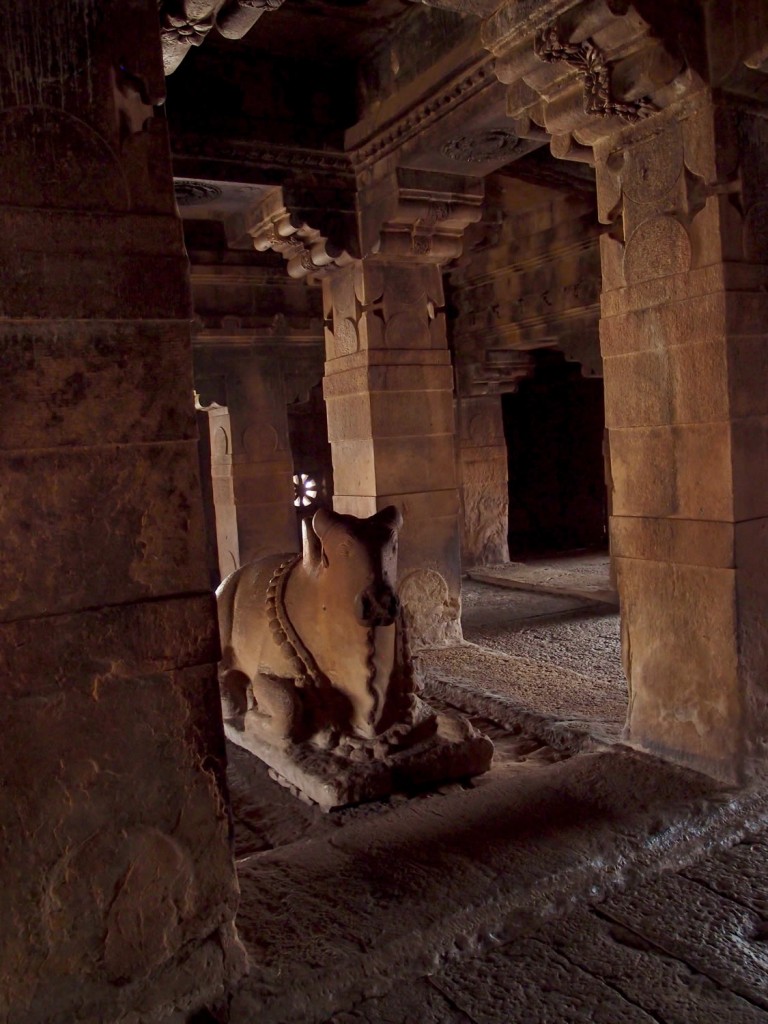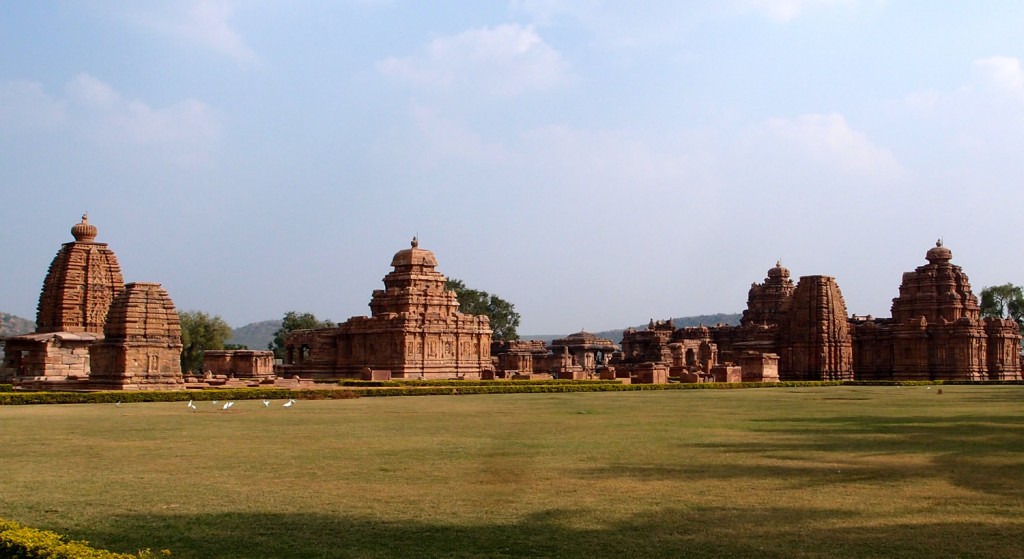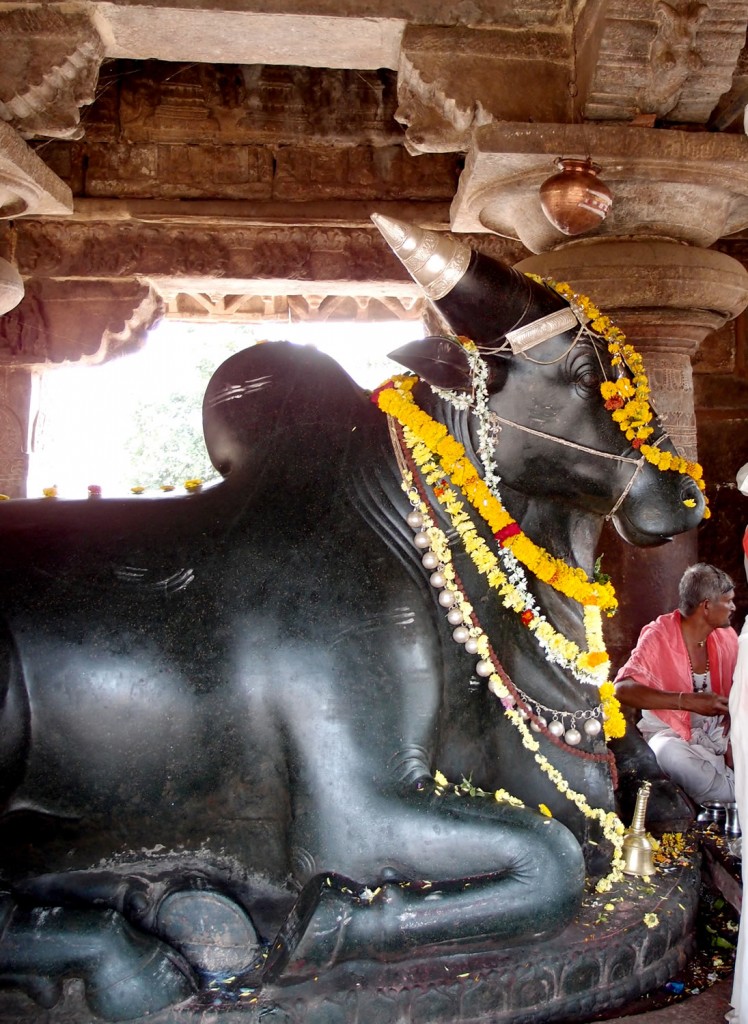Aihole and Pattadakal are two small villages which contain some of the marvels of early Indian temple architecture. The guidebook cliché about these villages is that they represent the cardle or laboratory of Indian temple design because elements and designs from different schools of Northern and Southern architecture found their earliest representations here.
The buildings date from the 6th and 8th centuries. It’s the age and the state of preservation that is is so stunning. The buildings are in a warm red sandstone and covered in carvings inside and out. The sculpture is crisp, of recognisable Gods and stories and often barely weathered.
The Archaelogical Survey of India (ASI) has been hard at work sanitising the sites. To some extent that’s a shame; the temples are increasingly surrounded by railings and pristine stretches of walkway and lawns, often in complete contrast to the village outside.
In Aihole in particular the temples were integal to the village; people’s houses were creek-by-jowl with the old stones, ancient statues and carvings were still worshipped, cattle wandered and fed among the ruins and clothes drying on the old walls. Dire warnings about vandalism are now posted up around the temples scattered around the village and feel a lot less vulnerable. The main sites now come with useful multi-lingual explanatory signs, downloadable audio guides, clean toilets and informative museums.









